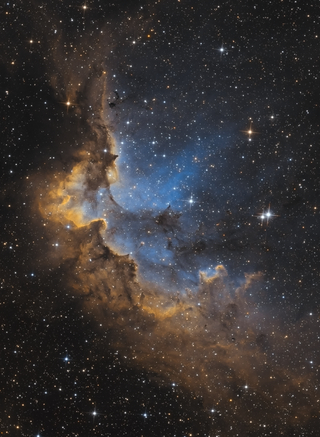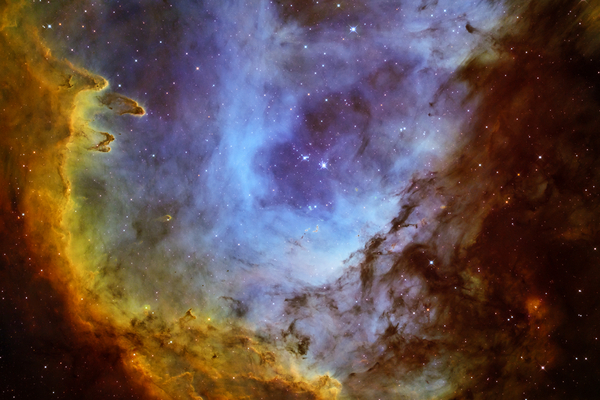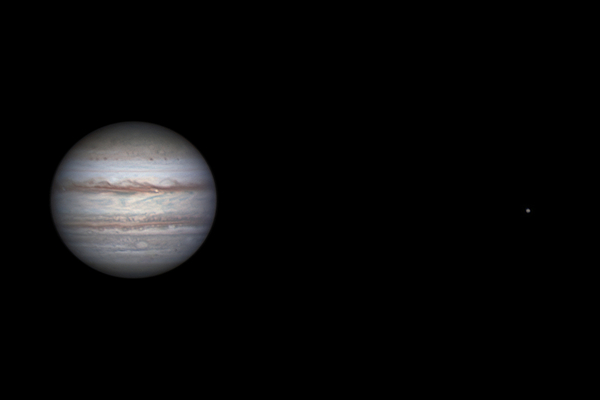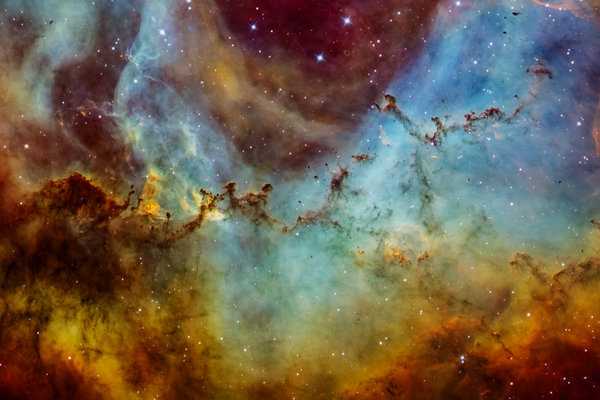Picture of the Month - August 2020 - NGC7380 The Wizard Nebula (SHO)
A wonderful Hubble-palette image - photo by Bence Tóth
A wonderful and special astrophotography image each month by Hungarian astrophotographers.
The Wizard Nebula located in the constellation Cepheus is a deep-sky object easy to capture with the classic narrowband technique. The gas cloud ionized by the stars of the open cluster NGC7380 located about 7200 light-years away and the interstellar dust take the shape of an imaginary wizard on the photographs.
The above-mentioned narrowband technique is extremely efficient in capturing the light of these faint, ionized molecular clouds because filters with narrow bandwidth eliminate the disturbing cosmic rays, making the pictures look more vivid and detailed. Even more, photographers have much more freedom to show the cosmic rays that are difficult to perceive with our eyes in terms of colors and contrast. That’s why these pictures look so spectacular. (the editor)
The dark, moonless nights were reserved for my other project (without the use of narrowband filters) during the summer, so I had to find another object parallel to it which was suitable for narrowband astrophotography. The Wizard Nebula raised my attention a long time ago and in July it was high enough on the sky to start photographing it. It took me four short, moonlit nights in July to finish this picture. Taking advantage of the fact that the narrowband filters filter out almost all the light pollution, I didn’t have to travel to the dark and well-proven observation sites, but I could take this photo from my backyard in Törökszentmiklós instead (SQM 20.6). With Ha-filter I was even able to continue taking raw images half an hour before and after astrodark - thus making the most of the already short nights.
Several things made the processing difficult. The SII-layer is very faint, so I had to proceed with the noise reduction with great care to keep all the details but not bring unmanageable noise into the color layers. The OIII-layer had better signal-to-noise ratio but there the gradient caused by the Moon had to be prudently removed. Besides managing the noise and setting the appropriate colors the aesthetic adjustment of the stars was the most difficult task. Since this area is located in the Milky Way, the star field is extremely dense even with the use of narrowband filters. During post-processing a balance had to be found where the main object stands out from the stars, yet the diversity of the star field in size and color remains.
Bence Tóth





